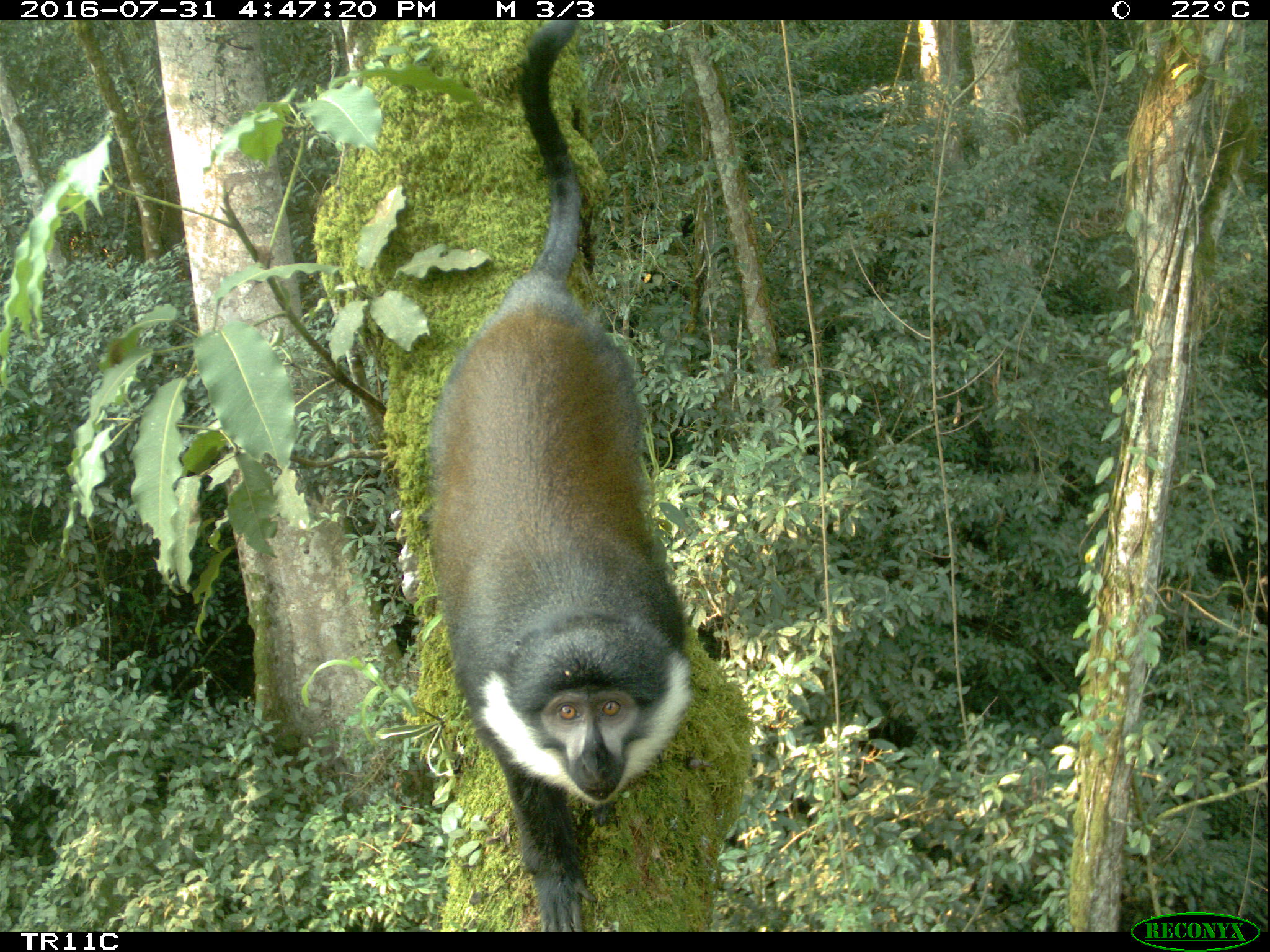It Just Popped Up Again Bat
- For the first time in twoscore years, researchers caught a Colina'due south horseshoe bat, confirming that the bat population still clings to life in Rwanda'due south Nyungwe National Park, a highly biodiverse area containing former-growth cloud forest.
- Rhinolophus bats echolocate through the unique and exaggerated folds on their noses chosen "olfactory organ leaves," which, in the instance of the Hill'south horseshow bat, gives them a bass frequency, dissimilar the soprano of other horseshoe bats.
- Now that researchers accept identified their call, they can apply acoustic monitoring to eavesdrop on the critically endangered species with minimal impact.
- A lead researcher on the team said the bats are probable restricted to a core area, and although the park is well-patrolled by rangers, this surface area should be a focus in order to protect the remaining bats, whose population remains unknown.
"When we caught it, we all just looked at it and said, 'You lot look ridiculous. Await how big your olfactory organ leaf is,'" Jon Flanders, director of endangered species interventions at Bat Conservation International, told Mongabay. The odd-looking creature in their net was a Loma'south horseshoe bat (Rhinolophus hilli)—the first seen since 1981.
"We feared the species may take already gone extinct," Flanders said. "To retrieve that we've been the first people to really see this bat in virtually 40 years … It was just remarkable."

Flanders was function of a ten-day, x-night trek searching for the elusive bat in the quondam-growth cloud forests of Rwanda's Nyungwe National Park. The fieldwork was brutal, he said, almost continuous rain pummeling down as they hiked through the steep terrain on little slumber. Only their work paid off one night effectually four a.one thousand. when they pulled the odd-looking bat from their net.
"We knew immediately that the bat we had captured was unusual and remarkable," Winifred Frick, chief scientist of Bat Conservation International and a fellow member of the trek, said in a printing release. "The facial features were exaggerated to the point of comical."
Every bit soon as they caught the fluffy, wrinkle-faced mammal, Flanders said, the group went nearly silent and began poring over textbooks to exist sure of their observe.
On their quest for the lost bat, the researchers used a series of traps, including a very fine net known equally a mist cyberspace that is used to catch birds and bats. When mist-netting, researchers try to release their catch as speedily equally possible to minimize stress to the animal, peculiarly when that beast is critically endangered.
So, Frick fabricated measurements while Flanders recorded the bat's echolocation calls and others compared notes in their bat books. "Nosotros only know that the clock is ticking before we have to let the thing go," Flanders said.

Frick was able to capture the first recording of the Loma'southward horseshoe bat. But initially, he didn't trust the readings, which registered the telephone call at an unusually low frequency. One time they permit the bat become, information technology flew along a nearby route and Flanders said he sprinted after it in the moonlight with his recorder, confirming that, while other species of Rhinolophus bats are sopranos, the Loma's horseshoe bat is a bass.
"Their olfactory organ is but phenomenally shaped and they echolocate through their nose, which is part of the reason why they have this really unique and exaggerated olfactory organ leaves … then they tin can command the phone call partly through their nose folds," Flanders said. "No bats in the U.S. echolocate through their nose. It's actually an Former Earth trait."

Knowledge of the bats' calls comes in handy equally a low-bear upon conservation tool. At present, rangers and researchers can survey for bats using audio detectors alone, "which is great," Flanders said, "because we take a critically endangered bat of unknown population size … this style information technology's aught impact because we're just eavesdropping on them as they're flying around and doing their normal behaviors."
"Knowing the echolocation calls for this species is a game changer," Paul Webala, senior lecturer at Maasai Mara University in Kenya and ane of the team'southward lead scientists, said in a press release.
Flanders said the project couldn't take been done without the Nyungwe park rangers, who plant most of the caves and mist-internet locations earlier the researchers arrived and accept now recorded more than a quarter of a million sound files to survey for bat calls. He too credits the collaboration between Bat Conservation International, the Rwanda Development Board and the Rwanda Wild fauna Conservation Association.
All of the records from this trek, both of the Hill's horseshoe bat and other bat species, are now available through the Global Biodiversity Data Facility (GBIF).


The collaborators have plans for another trek this year to further written report the bats' behavior, Dna sequence their guano (droppings) to figure out what kinds of insects they eat, and find where the species roosts (none have been found roosting in caves similar their other Rhinolophus relatives). While other bats like to hibernate in small crevices, these hang out in the open with their wings wrapped effectually their fluffy bodies, "looking a bit like a ripe plum," Flemish region said.
"Now our real work begins to figure out how to protect this species long into the future," he said.
So far, audio-visual monitoring suggests that the bats are restricted to a pocket-sized cadre range in the park. Flemish region said the forest is well patrolled by rangers, simply that staff should "double down" on this core area where the critically endangered bat lives to brand sure no one is damaging this critical habitat.

Significant amounts of Nyungwe National Park take been lost or degraded through poaching, fires and agricultural inroad, and although the Rwandan government has fabricated significant investments in protecting the park and halting this devastation over the past decade, Flanders said, there are nevertheless threats.
"Nyungwe National Park is one of the most biologically important montane rainforests in Cardinal Africa, supporting an exceptional range of biodiversity including many rare and endemic species, including bats," said Eugene Mutangana, conservation management expert for the Rwanda Evolution Lath.


In another study that took place in the park, researchers placed 108 cameras in trees. In one month, they spotted 35 different mammals, including six primate species.
"A lot of people think that by now we know everything … merely we just found a new species here," Jennifer Moore, pb author of the photographic camera trap study and a researcher at the Academy of Florida, told Mongabay in a 2020 interview.
"And so that but goes to testify that even in places where researchers accept been for decades, there is so much more to acquire."
Banner Image of Colina's horshoe bat by Jon Flanders, Bat Conservation International
Liz Kimbrough is a staff writer for Mongabay. Notice her on Twitter @lizkimbrough_
FEEDBACK: Utilize this grade to send a message to the author of this post. If yous want to post a public comment, y'all can do that at the lesser of the page.
Source: https://news.mongabay.com/2022/03/comical-bat-not-seen-in-40-years-is-found-again-in-a-rwandan-park/

0 Response to "It Just Popped Up Again Bat"
Post a Comment